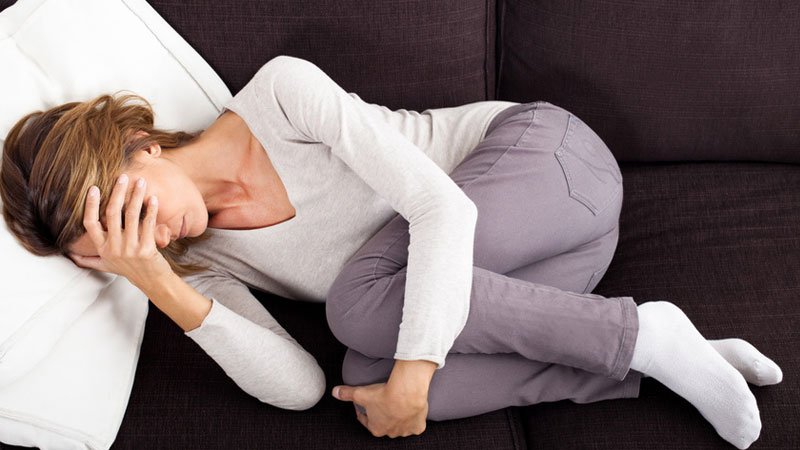Over the next few months I am going to be covering Aromatherapy and Women, and exploring some of the essential oils reputed to be useful in alleviating the symptoms of pre-menstrual tension (PMT), pregnancy and the menopause. This month I am looking at PMT or pre-menstual syndrome (PMS) as it is sometimes known.
The NHS (2013) [1] state that: “PMS is the name given to the physical, psychological and behavioural symptoms that can occur in the two weeks before a woman”s monthly period. There are many different symptoms of PMS, but typical examples are bloating, breast pain, mood swings, feeling irritable. Most women of childbearing age will experience some symptoms of PMS, but some women will have such severe symptoms that it can affect their daily lives. This condition is known as premenstrual dysphoric disorder (PMDD).”
Whilst there is a lot a woman can do at home to help relieve the symptoms of PMS, visiting a professionally qualified Aromatherapist can be invaluable. Time will be spent consulting with the woman and, from the details provided, a prescriptive blend suitable for the women’s individual requirements will be made. This blend may change from month to month to meet the woman’s needs. The Aromatherapist may wish to ‘extend the treatment’ by making a blend for the women or giving her ‘left-over’ blends to use at home between appointments. The FHT (2013) [2] suggest, however, that making blends for clients, or giving them ‘left-over’ blends to use at home may mean that the Aromatherapist will be considered as making the product ‘available on the market’, in which case there will be additional responsibilities to adhere to in accordance with the new EU cosmetic regulations.
Over the years, many women have visited my clinic asking for help to relieve the symptoms of PMS, which are thought to be linked to the changing levels of hormones in the body during a woman’s menstrual cycle. Certain lifestyle factors such as lack of exercise, stress and a poor diet are also thought to exacerbate the symptoms of PMS. It’s important to take the time to explore these areas during consultation and provide appropriate advice where possible. So, for example, I may signpost the woman to fitness and exercise classes, provide simple nutritional advice and give strategies for dealing with short-term and long-term stressors. I do believe that women can become empowered when taking ownership over their health, and this, in turn, can help to encourage a more positive outlook towards the ‘time of the month’ or ‘the curse’ as menstruation is sometimes known!
There are an array of essential oils reputed to be excellent in helping to alleviate the symptoms of PMS including: Clary Sage (Salvia sclarea), Chamomile German (Matricaria recutica), Chamomile Roman (Anthemis nobilis), Cypress (Cupressus sempervirens), Fennel (Foeniculum vulgare), Geranium (Pelargonium graveolens), Juniper (Juniperus communis), Lavender (Lavandula angustifolia), Melissa (Melissa officinalis) and, Rose Otto (Rosa damascena) to name but a few. It would be impossible to review each oil in depth in this article, so instead I thought it would be useful to share a case study with you, which provides an insight into a possible method of choosing a suitable blend for a client suffering from PMS.
PMS Case Study
Patient A is a 30 year old female who is in good general health. Patient A suffers from pre-menstrual tension in the week before her period, and for a few days afterwards. She has noticed that the symptoms include low mood in the days leading up to her period and painful periods when they arrive. Patient A believes that regular Aromatherapy treatments may help bring her some relief and comfort.
A good blend should, in my opinion, be a balanced synergy of top, middle and base notes and, as a general rule of thumb, the ratio for top/middle and base could be 2:4:1. My chosen oils would be Bergamot, Lavender and Rose Otto, and so I would use two drops of Bergamot, four drops of Lavender and one drop of Rose Otto in 14ml of a suitable carrier oil, such as Peach Kernel oil, providing a 2.5% synergistic blend.
Some of you may ask why I didn’t choose Clary Sage, as this is reputed to be excellent for PMS and is indicated for both symptoms. I just know however, from experience, that the oils chosen possess the relevant therapeutic properties and that the resultant blend is divine – Bergamot is uplifting, Lavender is considered to be both analgesic and calming, and Rose Otto, reputed to be an excellent hormonal balancer, also has the added benefit of possessing a beautiful aroma!
Personally, I would always choose Rose Otto rather than Rose Absolute even though Rose Otto is the more expensive oil of the two. The difference in price is normally due to the method of distillation used – Rose Otto is extracted through steam distillation, producing a pure or true essential oil, whilst Rose Absolute is extracted by solvent extraction, producing an ‘absolute’ rather than a pure or true oil. It’s useful to remember that some clients may have skin sensitivity to ‘absolute’ oils, due to traces of solvent residue being in the oil.
As I’m sure you know, there are several methods in which essential oil blends may be used such as: bathing, compress, inhalation etc. I believe that clients generally prefer massage and so for the case study provided above, I would recommend both a back and abdomen massage, making sure, of course, that the client wasn’t menstruating at the time of treatment, in which case I would omit the abdomen.
If you’re not confident in blending your own oils you could try our PMT pre-blended essential oil which contains Clary Sage, Sweet Marjoram, Geranium, Bergamot, Parsley Seed and Rose Otto.
In my next article, I will talk about pregnancy – a minefield when considering which essential oils can be used safely, and which ones should be avoided. Until then, stay safe and happy blending!
Christine Fisk
Consultant Aromatherapist
Disclaimer & Safety Advice
References:
[1] http://www.nhs.uk/conditions/premenstrual-syndrome/pages/introduction.aspx
[2] FHT (2013) “Cosmetic products regulation update – An update on the new EU regulation for cosmetic products and how this might impact members…” International Journal, page 38, Issue 105

